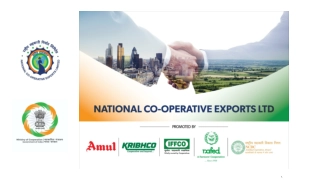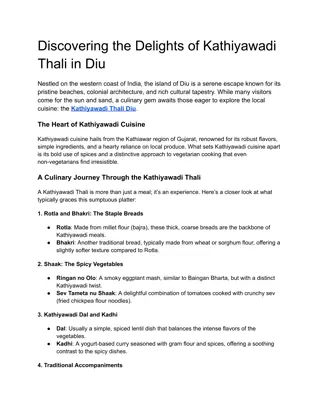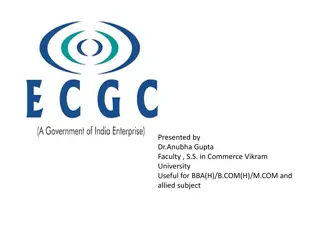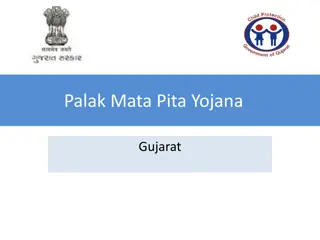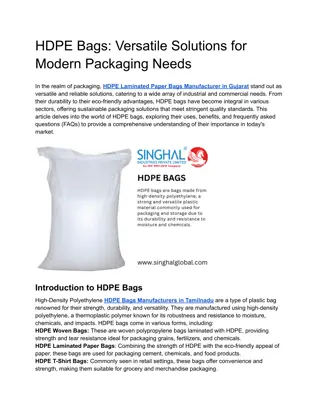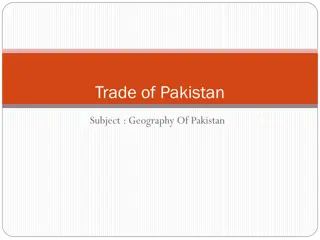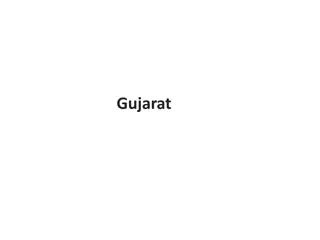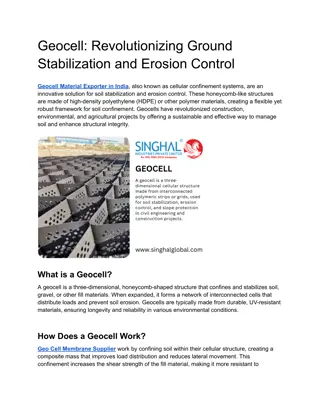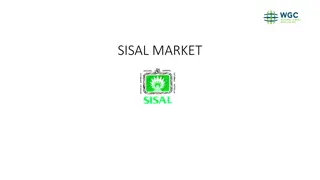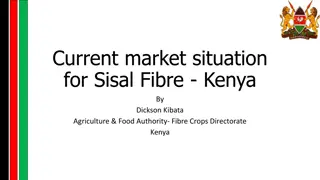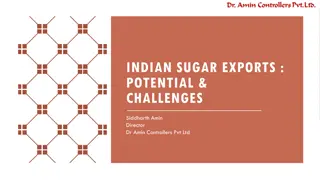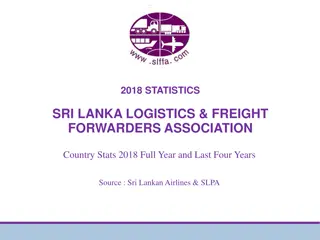Investment Opportunity Analysis: Gujarat Ambuja Exports Ltd. (GAEL)
GAEL is a promising investment proposition with a diversified revenue stream including maize processing, agro processing, and cotton yarn segments. The company boasts sticky clients in the FMCG and pharma industries, strong execution skills with significant market share growth, and efficient operations leading to low production costs. Expansion plans and new developments further enhance its growth prospects.
Download Presentation

Please find below an Image/Link to download the presentation.
The content on the website is provided AS IS for your information and personal use only. It may not be sold, licensed, or shared on other websites without obtaining consent from the author. Download presentation by click this link. If you encounter any issues during the download, it is possible that the publisher has removed the file from their server.
E N D
Presentation Transcript
Gujarat Ambuja Exports Ltd.(GAEL) I picked it up from http://stalwartvalue.com/ - Nirav Shah
What the company does 4000 cr sales in FY19 1. 1900 cr sales in maize segment (EBIT of 12-18%)- Starch, Starch derivatives 2. 1900 cr sales in agro processing. Mostly edible oil and wheat processing (EBIT of 3- 7%) 3. 250cr sales in Cotton yarn segment Power segment
Why to Invest? 1. Sticky Clients (not completely a commodity business) 2. Execution skills (0 to 25% market share in 12 yrs) 3. Lowest cost producer due to effeciencies of scale 4. Capital allocation and conservatism. Expansion through internal accruals.
1. Sticky Clients (not completely a commodity business) GAEL Supplies to blue-chip FMCG and pharma cos (Diversified client base) The starch derivative products are a tiny proportion of overall product costs (yet a critical component) Approval process is 2-3 yrs
2. Execution skills (0 to 25% market share in 12 yrs) Entered into maize processing in 2007. 7000 cr market growing at 7-8% (1900 cr sales of GAEL) Current 25% market share. Projected 30% market share by FY22 implying sales growth of 13-15%. Also shows a long runway for growth. Profits can grow at 20-25% for the next 4-5 yr due to efficiencies of scale and low base effect of current year. ROIC in this segment is 20-25%. So no equity dilution required.
2. Execution skills (Expansion) Current capacity of 3000 TPD to increase to 4000 TPD by june 2021 (post malda unit) The last plant they set up in Maharashtra was at half the cost of what Cargil India set up in 2012. All existing locations have enough spare land to double the capacity On HFCS, while regulatory approval could only be 6-9 months away, market might take another 2 yrs to . Once the opportunity materializes, co will install machinery in 5-6 months with min capex.
New developments In FY19, sold 5000 tons of branded starch. Target of 25000 tons in 5 yrs. Corn Steep Liquor (CSL), a by-product of corn wet milling has been a big source of pollution. 3 yrs ago, GAEL started a pilot R&D to generate fiber from this. Earlier used to produce power. But fiber can be sold in market at much better realization. Last yr 40% conversion. Target 80% conversion of CSL within 2yrs.
3. Lowest cost producer due to effeciencies of scale Multi location plants to save on logistics. 4-5% cost advantage as largest corn buyer. Also large warehousing capacity. So can buy large quantities when prices are low. .
4. Capital allocation and conservatism The capital employed in its cotton yarn and agro processing divisions together stood at 38% of its total capital employed as on March 2019 In 2016 they had invested 50cr to revive the textile division. But now have given up and are talking of VRS and selling off the unit. Now all capital is invested in Maize processing only.
4. Capital allocation and conservatism.. Mindset to do capex with internal accruals only. WC loans for RM procurement taken during jan to april and slowly paid down throughout the year. For FY20, GAEL did not do advance purchase of maize in this period due to elevated prices. Strong Cash conversion (NP/CFO) High Fixed asset turnover = not highly capital intensive Debtor days around 20 & inventory turnover of more than 5 times
Competition Riddhi Siddhi Gluco Boils In 2012 was taken over by a French giant called rocket. 50% capacity utilazation (CU) & loss making Anil Ltd Ahmedabad with sales of 1000 cr (15% market share) and 1000 cr debt. Now bankrupt Sukhjit Starch Punjab -65%CU. Now raising debt to di- worsify to build a food park in Punjab. Cargil India 60-70% CU. 130cr loss Gulshan Polyols muzzafarnagar 75% CU, manily into Sorbitrol 70% solution. So not integrated. Industry operating at 50-60% CU while GAEL s CU around 85-90%
Risks Key Man Risk Oil Processing segment is volatile and low EBIT. Sales up 8%. But EBITDA fell from 13.6% to 3.8% due to higher share of trading and refining segment, increase in soyabean prices. Loss making textile legacy unit
Management Late Shri Vijaykumar Gupta (The father) Manish Gupta (Son and current CMD) (47 yrs old) President of Industry body. Owns 64% stake His brother has moved out of the business in 2017 via buyback..
Maize scenario the crop duration ranges between 90 to 150 days
Current scenerio Armyworm Infestation in South. So prises jumped from 14-15/kg to 24-25/kg in a few months. gov raised MSP of maize from rs 14/kg to rs 17/kg in runup to elections. Current maize prises are 20-21/kg. For exports, SP is benchmarked to global maize prices which increased only 15% to $230/ton (~ rs16/kg).
Current scenerio GAEL imported 1 lac ton in jan-mar 2019 under advance lisc which was 72% of total imports allowed to the whole. import duty of 55%. Until now, gov had a common code for all varieties of corn imports. In budget 2019, they bifurcated HS codes for corn, feed corn and pop corn. So now they will be allowed to import higher qty for re-exporting without levy of 55%.
Valuation long runway for high growth due to Inherit growth in the Starch segment Market share gain due to weak compition Current M cap = 1500 Cr Borrowings = 150 cr


